Moving Magnet vs Moving Coil Phono Cartridges – The 3 Main Differences
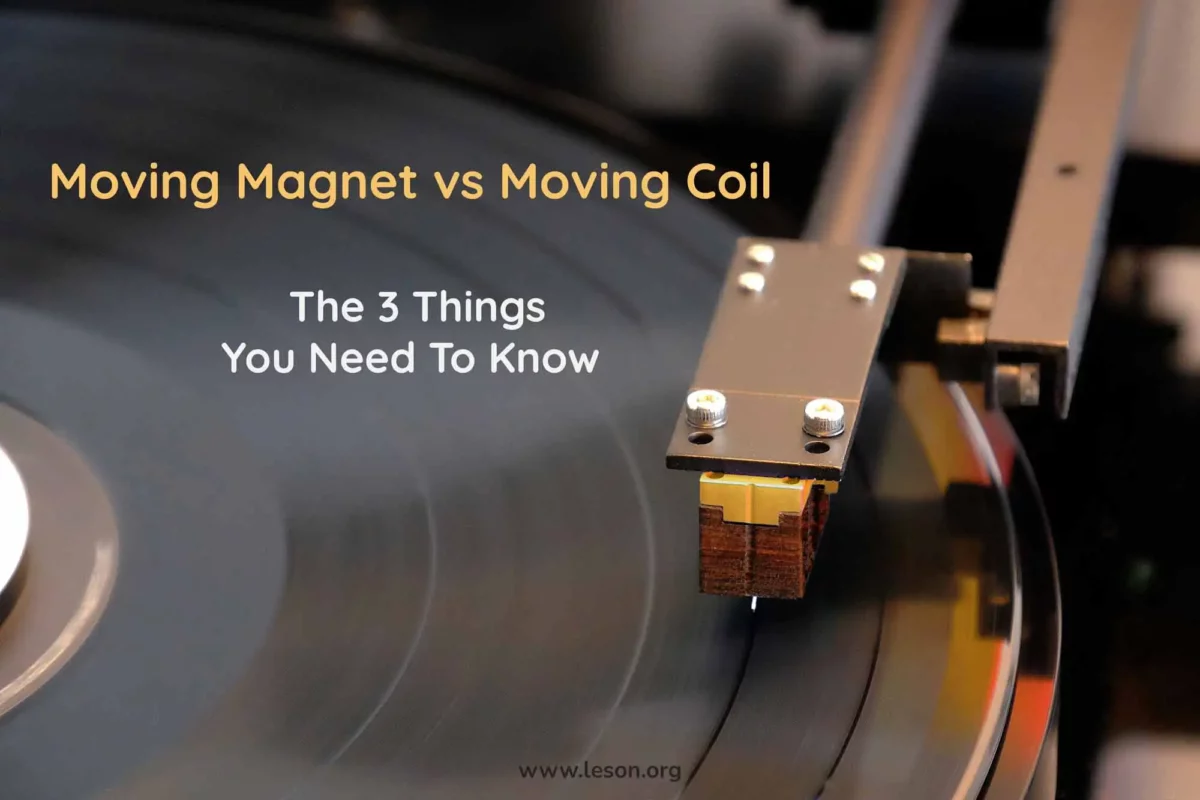
In this article, we will compare Moving Magnet vs Moving Coil cartridges and cover the 3 most important differences between them.
When you play records, the phono cartridge has a paramount impact on the sound of your turntable; therefore, the time you spend learning about this important component is well spent!
Once you understand the benefits and drawbacks of each design, you can choose the best cartridge for your turntable.
Ready?
Let’s get started!
Moving Magnet vs Moving Coil: Introduction
Moving Magnet and Moving Coil cartridges work on the same basic principle: mechanical vibrations are converted into an electrical signal.
In both Moving Magnet and Moving Coil designs, the cartridge cantilever holds a diamond stylus. This stylus tracks the record groove on one end, and transfers the vibrations to the generator inside the cartridge body.
The generator, may it be Moving Magnet or Moving Coil design, works according to Faraday’s first law of electromagnetic induction. This law states that whenever a conductor is placed in a varying magnetic field, an electrical voltage is induced in that conductor.
In both cartridge designs, a coil of wire is placed in the magnetic field of a permanent magnet.
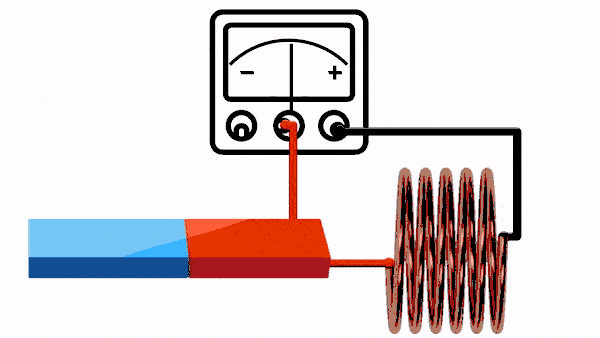
End of the similarities between Moving Coil and Moving Magnet designs.
Now let’s see their distinctions:
In a Moving Magnet design, the coil is stationary and the small magnet is attached to the vibrating cantilever.
Inversely, in a Moving Coil cartridge, the magnet is stationary and the coil is attached to the vibrating cantilever.
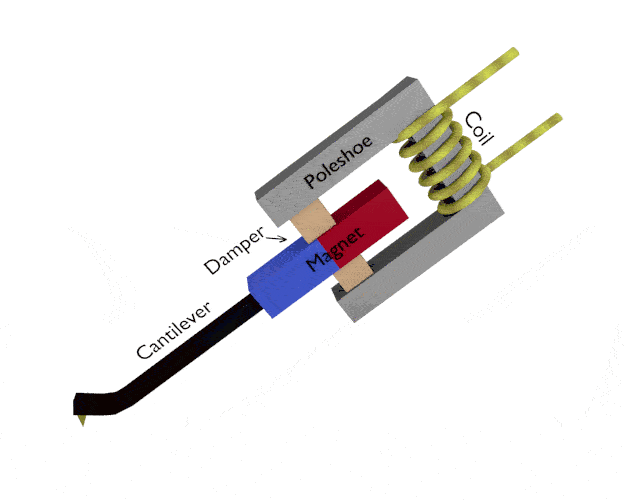
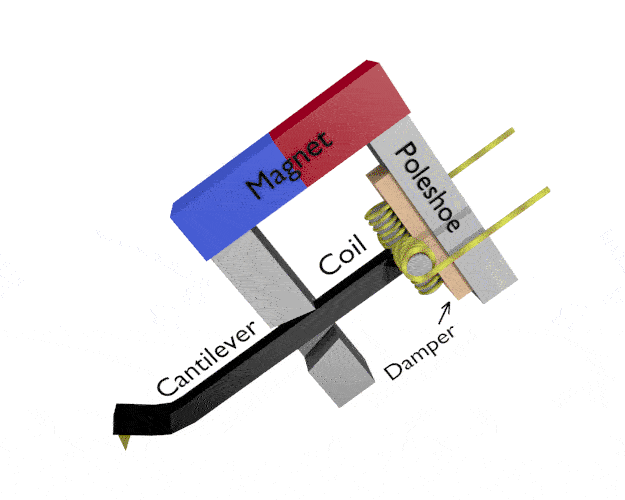
We now know that Moving Magnet and Moving Coil phono cartridge designs are 2 methods to get the same result.
But does it make a big difference whether you move the coil close to a fixed magnet or vice versa?
Well yes, and here are the 3 things you need to know to better understand why:
1. Moving Magnet vs Moving Coil: High vs Low Moving Mass
The first thing to understand is the notion of moving mass.
In a Moving Magnet cartridge, the moving part is the stylus / cantilever / magnet assembly. In a MC cartridge, it is the stylus / cantilever / coil assembly.
The coil windings of a Moving Coil cartridge are often lighter than the magnet of their Moving Magnet counterparts. We therefore say that Moving Magnet cartridges have a higher moving mass than Moving Coil cartridges.
The larger moving mass of Moving Magnet cartridges implies that their stylus has more inertia than the stylus of Moving Coil cartridges while tracking the record groove. In other words, the stylus of a Moving Magnet cartridge cannot react as quickly over the record, limiting its capacity to track subtle changes in the groove’s surface.
This is therefore where MC cartridges tend to have a first performance advantage. Sonically, Moving Coil cartridges offer a more detailed resolution, and better dynamics.
2. Moving Magnet vs Moving Coil: High vs Low Inductance
The second key difference between the 2 designs is that of inductance.
As Moving Coil cartridges have smaller coils than Moving Magnet cartridges, we can say that Moving Coil cartridges have a lower inductance.
Why is this important?
Because the inductance of the cartridge, the capacitance of the phono cable, and the resistance & capacitance of the phono preamp input altogether form a harmonic oscillator circuit, also called RLC circuit.
This kind of circuit has a ringing resonance at a certain frequency, and a steeproll-offof frequencies above the resonant point, also called low-pass filter. The lower the inductance of the coil is, the higher the frequency of the resonance is, and vice versa.
So for Moving Coil cartridges, the resonant frequency will be way up in the ultrasonic range, and changes of cable or phono input capacitance won’t have much of an audible impact. The ultrasonic ringing can also be damped by loading the cartridge with the appropriate resistance at phono input level.
With Moving Magnet cartridges, the higher inductance and capacitance will have an impact on the frequency response of the system in the audible range. For good Moving Magnet cartridges, the resonant frequency often falls somewhere in the top two octaves of the audible range, with all frequencies above that being rolled-off.
So to summarize: Moving Coil cartridges have a lower inductance than MM cartridges, so their frequency response is flatter and more extended. In comparison, Moving Magnet cartridges tend to have an odd frequency response, and a lack of high frequencies.
For stereo cartridges, smaller coils also means less crosstalk between them. As a result, MC cartridges tend to have better channel separation (+10dB or more) than MM cartridges. It translates acoustically into better stereo imaging.
3. Moving Magnet vs Moving Coil: High vs Low Output
The third crucial distinction is the output each cartridge produces.
The output is measured in millivolts (mV), and largely depends on the size of the coils.
We now know that MM cartridges have larger coils than their MC counterparts. As a result, they have a higher output (typically 3 to 7 mV), and can be connected to the standard phono inputs of a stereo amplifier or receiver. Easy and cost effective!
For MC cartridges and their very small coils, it is a different story. Their output level is much lower, typically between 0.2 to 0.6 mV. Therefore they need an extra gain in the phono preamp of 20 to 26dB.
This extra gain can be achieved with a MC Step-Up Transformer or a MC Phono Preamp. We recommend Phono Preamps rather than Step-Up Transformers because the latter are prone to magnetic noise. The low current generated by the cartridge often creates an audible noise (Barkhausen noise) in the Step-Up Transformer core. Some very good Step-Up Transformers do exist, but they are quite expensive.
So to summarize: Moving Magnet cartridges and their high output are much easier to work with and just require a MM Phono Stage. MC cartridges require a MC Preamp, or a Step-Up Transformer between the turntable and the MM Preamp. The extra equipment can be very costly and need to be taken into account when choosing between the 2 types of phono cartridge!
Moving Magnet vs Moving Coil: Conclusion
You now know the 3 main distinctions between both designs, as well as their implications.
All these information can be summarized as follows:
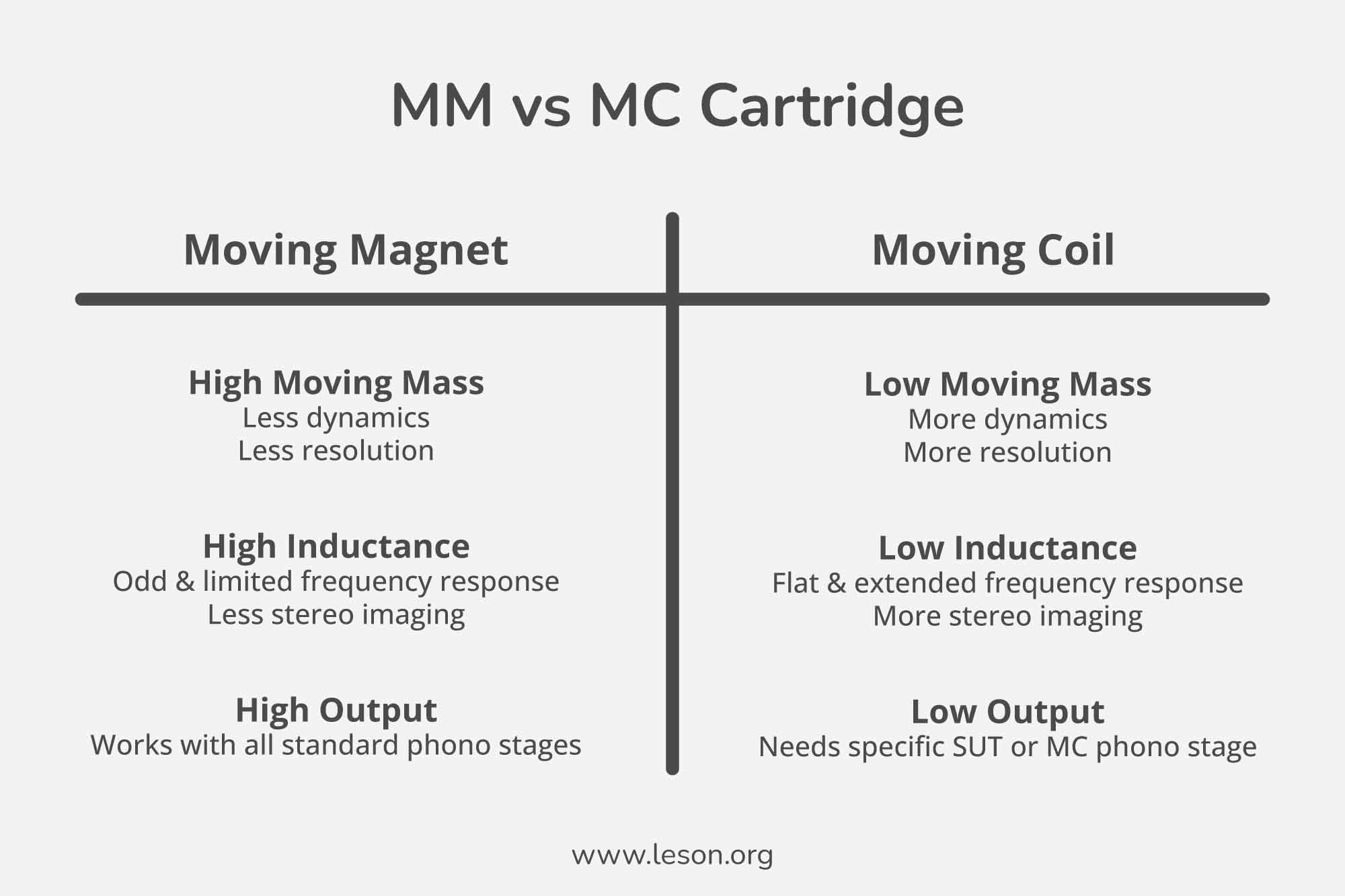
Phono Cartridge Differences: Frequently Asked Questions
What about High Output MC Cartridges?
These models of Moving Coil cartridges feature larger coils, so their output is generally above 2mV. They require an impedance loading of 47kOhm like MM designs, so they simply require a phono preamp with MM input. No need for MC phono stage.
Such design may offer a lighter weight of moving parts than their MM counterparts, but their inductance will be higher than low output MC cartridges. Therefore they will suffer the same drawbacks: high frequency roll-off, and cross-talk.
Overall, they are a sort of compromise between MM and MC cartridges.
What about Moving Iron Cartridges?
The Moving Iron design has some strengths of the Moving Coil design, but also some drawbacks of the Moving Magnet design.
In this type of cartridge, an iron rod is fixed to the cantilever instead of a magnet or a coil. This iron rod moves within the field of fixed permanent magnet and coils.
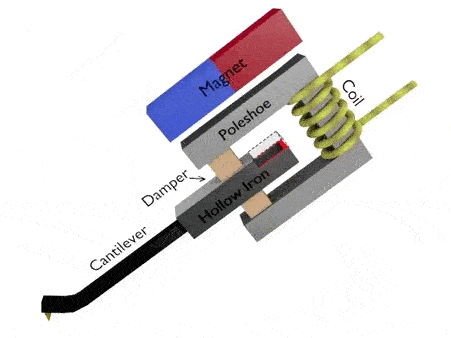
This moving piece of iron can also be made of iron alloys to further reduce its mass.
Using moving iron generally yields the benefits of light moving parts, at the expense of high inductance and low output.
What about the Removable Stylus?
In almost all MM cartridges made, the stylus / cantilever / magnets assembly can be removed and replaced easily.
Moving Coil carts work differently: the stylus / cantilever / coils assembly is wired to the connector pins at the back of the cartridge body. Hence when the stylus becomes worn, the cartridge must be returned to the manufacturer for retipping.
The owner of a MM cart can therefore easily replace a worn stylus by himself, which is quite convenient. However this convenience has a drawback: the mechanical stability of their moving assembly is in general inferior. This can translate in all kinds of minor sonic artefacts.
Which design has a longer lifespan, MM or MC?
The lifespan of a cartridge depends on a myriad of factors:
- The construction quality
- The stylus shape (e.g. conical styli wear much faster than line contact ones)
- The stylus quality (e.g. industrial or natural diamond)
- The vertical tracking force
- The quality of the alignment on the headshell
- The records cleanliness
- And so on…
It is therefore difficult to predict which design has a longer lifespan. But in general, Moving Coil would.
Join Our Community!
Subscribe to La Newsletter
Stay informed with the latest news and blog posts from the world of high fidelity sound.
Gregory de Richemont
At the helm of Le Son, Gregory combines his business administration expertise with a deep passion for high fidelity sound. Renowned for his skill in analog audio, Gregory's journey from corporate life to audiophile expert is a testament to his dedication to pure sound. Discover more on our About Us page.

